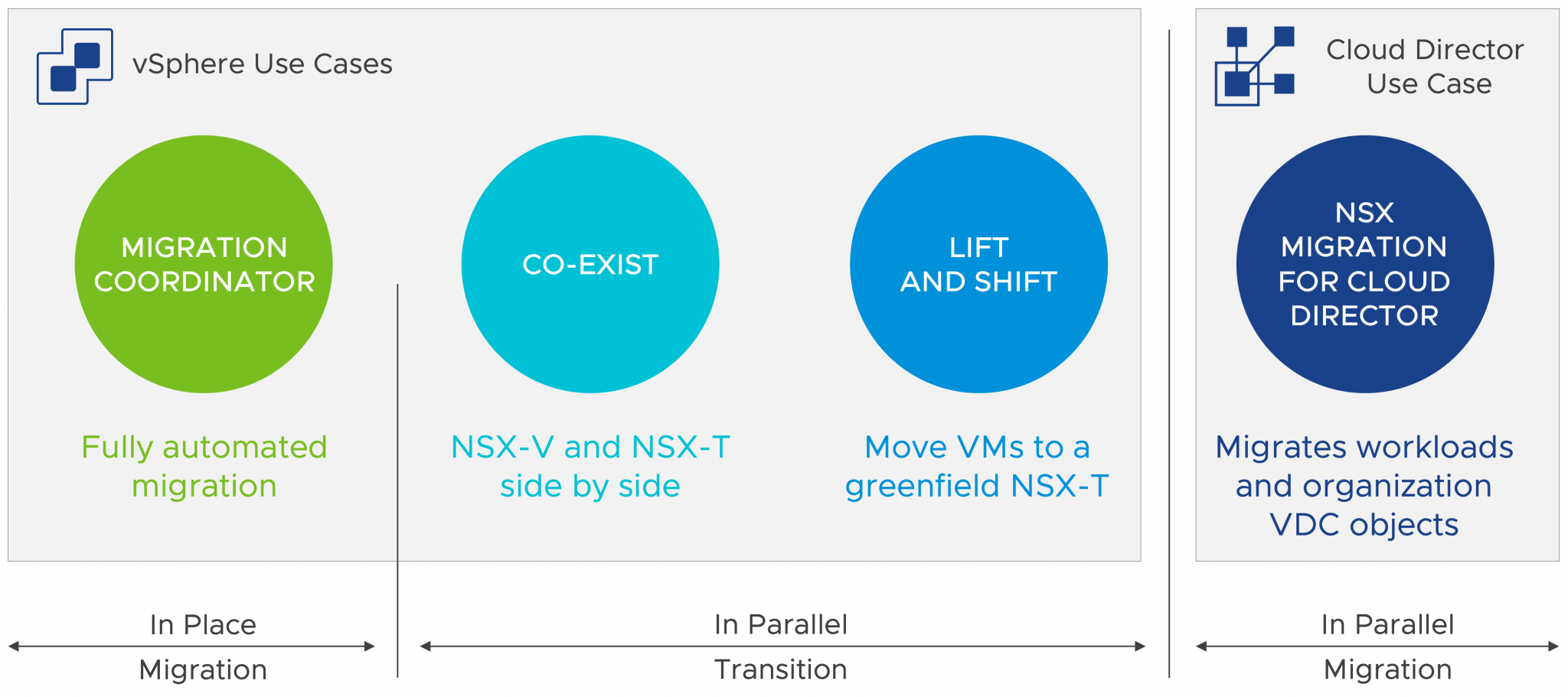As most of you are aware by now, VMware announced the sunsetting of NSX for vSphere (NSX-V), and the current end of general support is targeted for January 2022, while the end of technical guidance will be in January 2023. It is important that Cloud Providers migrate from NSX-V to NSX-T as soon as possible. As the process for larger providers will take a good amount of prep work and testing, the earlier they start the better their experience will be. The good news, the migration tools available this time is very helpful to streamline the process.
There are multiple methods to migrate from NSX for vSphere to NSX-T Data Center. They are listed below in the order of their usability in a VMware Cloud Director environment:

- VMware NSX Migration for VMware Cloud Director can migrate the workload VMs and other organization VDC objects to the same vCenter Server instance managed by VMware Cloud Director. This is the option you really want to use if you have VMware Cloud Director in your environment. Here is the link for download. Here is the link as well for features supported by the migration tool.
- Coexistence – New workloads are deployed on NSX-T, and the older workloads are allowed to die over time. This will only work for those providers who knows their old workload is dying with time or they were trying to decommission that environment. I don’t see many being in this boat, but it’s still maybe an option for some.
- Lift and shift – NSX-T infrastructure is deployed in parallel along with the existing NSX-V infrastructure. The key difference from the co-exist model is the migration of the configuration and workloads from NSX-V to NSX-T, which have to be handled manually, or by using scripting or a 3rd party tool. You would go for this option mainly if option one above had a limitation that does not fit your need and you needed to create your own scripts. I would try to avoid this one unless there is no way you can satisfy your need with method one above. Please share your feedback with your local VMware resource to see if it is on the near roadmap or if there is a known work around.
- (Avoid This one if you have VCD) NSX-T Migration Coordinator – Built-in, automated migration tool introduced with the NSX-T 2.4 release and improved multiple times in the past year. However, the NSX-T Migration Coordinator is not aware of VMware Cloud Director constructs and thus cannot be used in such environments. I only listed this one to ensure you avoid it if you have VMware Cloud Director into your environment.
While many had been waiting for VMware Cloud Director integration to reach near parity to NSX-V to start their migration work, VCD 10.2 should be that release. Most of the functionality needed is already there and satisfy most. Migration planning should be started as soon as possible.
Here is the new features introduced in the NSX Migration for VMware Cloud Director 1.2 (described in this blog) such as:
- Distributed firewall (DFW) migration support
- NSX-V load balancing migration to NSX Advanced Load Balancer (Avi)
- Multiple edge gateways support
- Multiple external networks support
- DHCP services on the source isolated organization VDC networks support
- VRF gateway as destination external networks support
The NSX-T migration tool provides per VMware Cloud Director Org Migration to a New Cluster under NSX-T management. The amount of service disruption is limited to BGP Convergence Time (from switch to T0 (external network)) and network downtime is minimized using bridged networks during migration. Migration uses live migration with vMotion to ensure non-disruption to user workloads and rollback is also available via vMotion, if needed.
For those interested in more details of how the migration tools work, please check the great post by my colleague Tom Fojta: How to Migrate VMware Cloud Director from NSX-V to NSX-T
